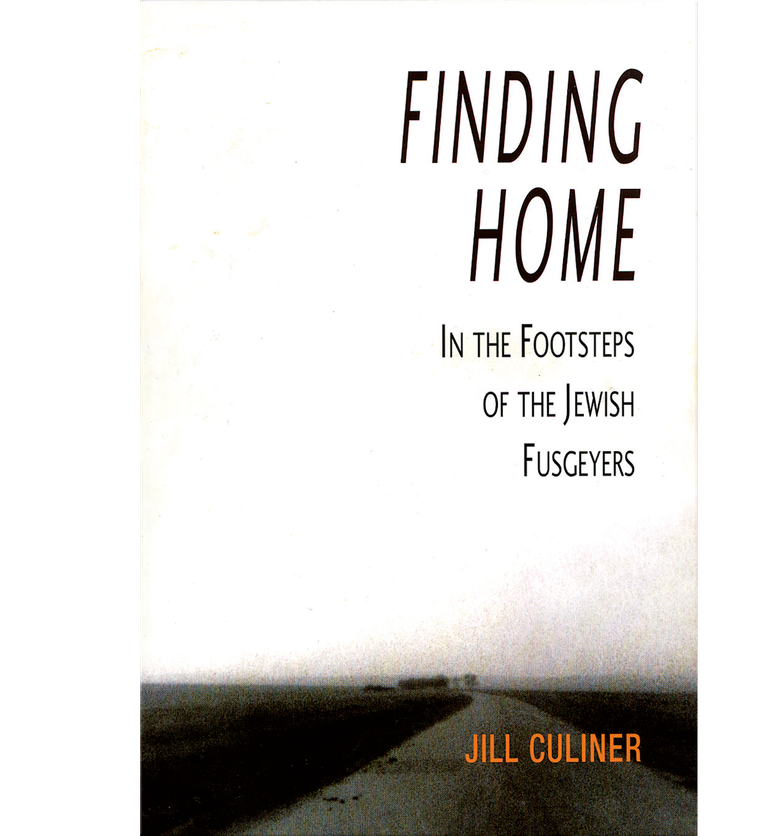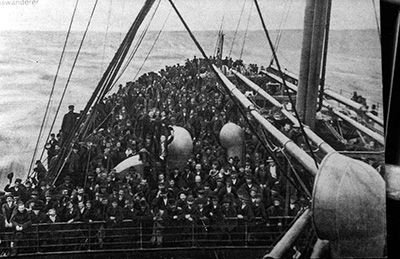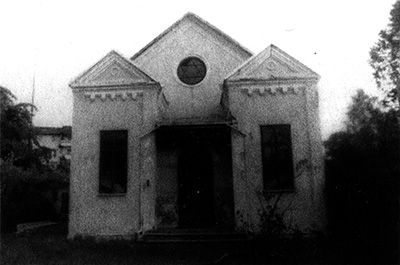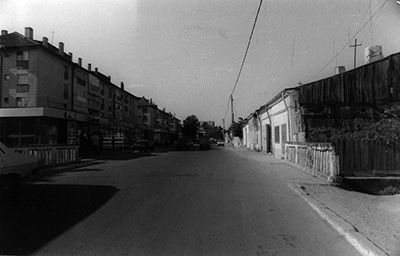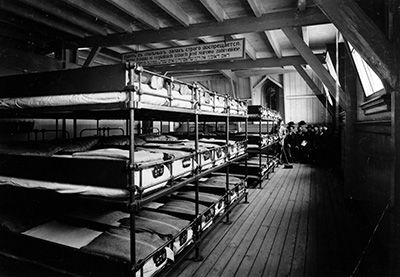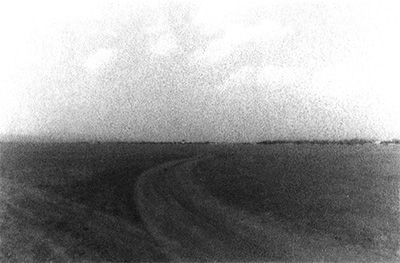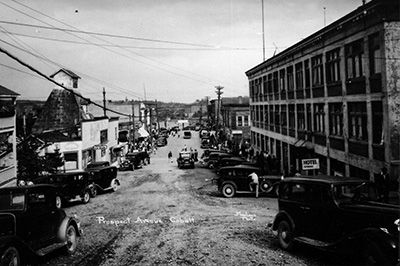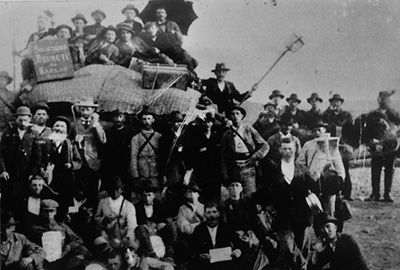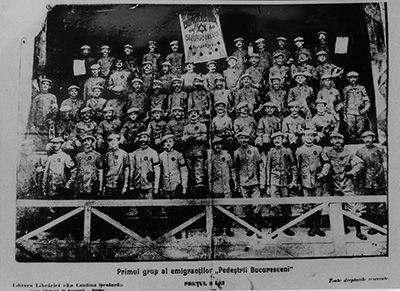Non-fiction/History/Travel
Finding Home
In the Footsteps of Jewish Fusgeyers
The Fusgeyers (Yiddish for "foot-goers") were Jews who fled persecution in Romania in the early 1900s and found refuge in the New World. One hundred years later, Culiner, an intrepid walker, retraces their steps across Romania on foot in the search for lost remnants of this epic journey. She continues her quest through western European cities, following the Fusgeyers' journey from the Romanian/Hungarian border to the port of Liverpool, England, and then on to Canada.
Winner of the Joseph and Faye Tanenbaum Prize in Canadian Jewish History, 2005, short-listed for the Forward Magazine Prize.
To hear about Finding Home, go here:
https://soundcloud.com/j-arlene-culiner/finding-home-in-the-footsteps-of-the-jewish-fusgeyers
The Fusgeyers and the Jewish Pedestrian Movement
When Walachia and Moldavia united after the 1848 revolution, the new country of Romania was created. In 1866, a constitution was produced, and the seventh article stated that Romanian citizenship would be restricted to the Christian population only. Romanian Jews who had been in this region from the time of the Romans, were now “foreigners”, and anti-Semitism had become part of national identity.
The Fusgeyers were the Romanian Jews who, unable to find work, suffering pogroms and blood libels, were determined to leave their country and to do that in very a visible way. Organizing themselves into groups, they decided they would walk all across Romania, then across Europe until they reached the ports and the ships that would carry them to America.
Calling themselves fusgeyers (foot-goers, walkers or pedestrians,) they were all healthy, professional men and women: trades people, artisans, workers and students who trained themselves in long-distance walking and vowed to share their last morsel of bread with one another. Fusgeyer groups organized themselves in cities all across Romania. Some named
themselves after they city they hailed from, such as The Foot Wanderers from Roman or “One Heart of Galatz.” Others were organized by profession: “The Painters and Dyers of
Bucharest,” or the “Students Workers and Clerks of Bucharest,”
Several groups were composed entirely of women — and one was called “Bat Ami” (Daughter of My People).
The Fusgeyer movement lasted from 1899 to around 1907. It is unknown how many Fusgeyer groups existed, and how many participants there were in each (although most ranged from between forty and three hundred walkers). Before leaving their homes, the Fusgeyers established a press in which they bid farewell to their old homeland in sentimental songs, poems and stories and appealed for financial aid. Dozens of these newspapers and brochures appeared, but there was never more than one issue of each, and they were sold to raise money. Funds were also raised when the Fusgeyers gave amateur theatrical performances or choral concerts in towns along the way.
Members of those Fusgeyer groups who could afford to do so, wore uniforms. Others sported distinguishing caps or straw hats and leather peasant sandals (apintosh or opinci). They carried lanterns for walking at night and marched into towns with an organized, military-like pomp.It was, no doubt, this display of dignity and courage that roused the admiration of the
populace; careful to circumvent towns where officials were said to harbour anti-Semitic feelings, Fusgeyers recounted how impoverished Romanian peasants waited for them along
the road, offering water, bread, food, tobacco, wine and blessings for a safe journey.
Although the original idea had been to cross all of Europe on foot, they were stopped when they reached the border. The Austro-Hungarian government, overwhelmed by stragglers and beggars on their roads, passed laws allowing only those with train tickets into their country. Because of this, charitable Jewish organizations in all the major cities helped raise the money for train tickets and food for the refugees through all of Europe.
During the Second World War, the Yiddish Scientific Institute known as YIVO relocated from Vilnius, Lithuania, to New York City in the face of Nazi persecution. YIVO had been collecting, publishing and sponsoring books on linguistics, folklore, literature, history and psychology since its inception in 1925, but the scholars were now being murdered and the collection of manuscripts, photographs and folklore was being destroyed.
To reconstruct their archives, the Yiddish periodical, the Bleter, offered a prize for the best immigrant story; the winner was Jacob Finkelstein, writer Memoirs of a Fusgeyer from Romania to America).
I first read about the Fusgeyers in Irving Howe’s World of Our Fathers and even though all information was contained in a few brief sentences, my imagination was fired. I wrote to YIVO, and asked for a copy of the Finkelstein’s memoir. It did take a while before I could translate it from the original Yiddish (it is probably the only existing document written by a Fusgeyer) but, when I finished, I was obsessed by the idea of following Finkelstein’s itinerary and crossing Romania on foot. I would then continue along the immigrant trail through Budapest, Vienna, Nurnberg, Frankfurt, Rotterdam, London and Liverpool, and on to America.
I wanted to see if there was still any trace of the Fusgeyers passage in archives or in memory, although I was well aware that the quest could be futile. As a photographer, I have
walked through much of Europe in search of vanished shtetlach, and I know the impossibility of recapturing what, after the destruction of the Jewish community, no longer
exists. Still, I thought that luck would see me through.
And that was the case in several places. In the city archives, of Nurnberg a kindly but apologetic archivist explained that all records of that city’s Jewish community — from 1890 to 1930 — were destroyed by the Nazis. He did say that only one document from 1901 had somehow survived. Was I interested in seeing it? Of course I was. And when it arrived, I saw it was a report of the Nürnberg-Fürth Jewish Community, and the main topic was the Romanian immigrants (Fusgeyers and others) who were at that moment in the train station.
Another, highly emotional moment was when I was in Regina Saskatchewan looking for traces of former Jewish farming communities, and someone happened to mention that the
father of a woman named Edith Kliman had been a fusgeyer. Highly excited, I called her and begged her to let me come and meet her. Then I raced across the city in a mad dash.
When I was finally face-to-face with Edith, I asked her to tell me everything her father had said about being a Fusgeyer.
She looked at me, amused. “Well, he never said anything. He didn’t want to talk about those days. They were over. He was here now, in Canada."
Photos from Finding Home in the Footsteps of the Jewish Fusgeyers
Nous avons besoin de votre consentement pour charger les traductions
Nous utilisons un service tiers pour traduire le contenu du site web qui peut collecter des données sur votre activité. Veuillez prendre connaissance des détails et accepter le service pour visualiser les traductions.


